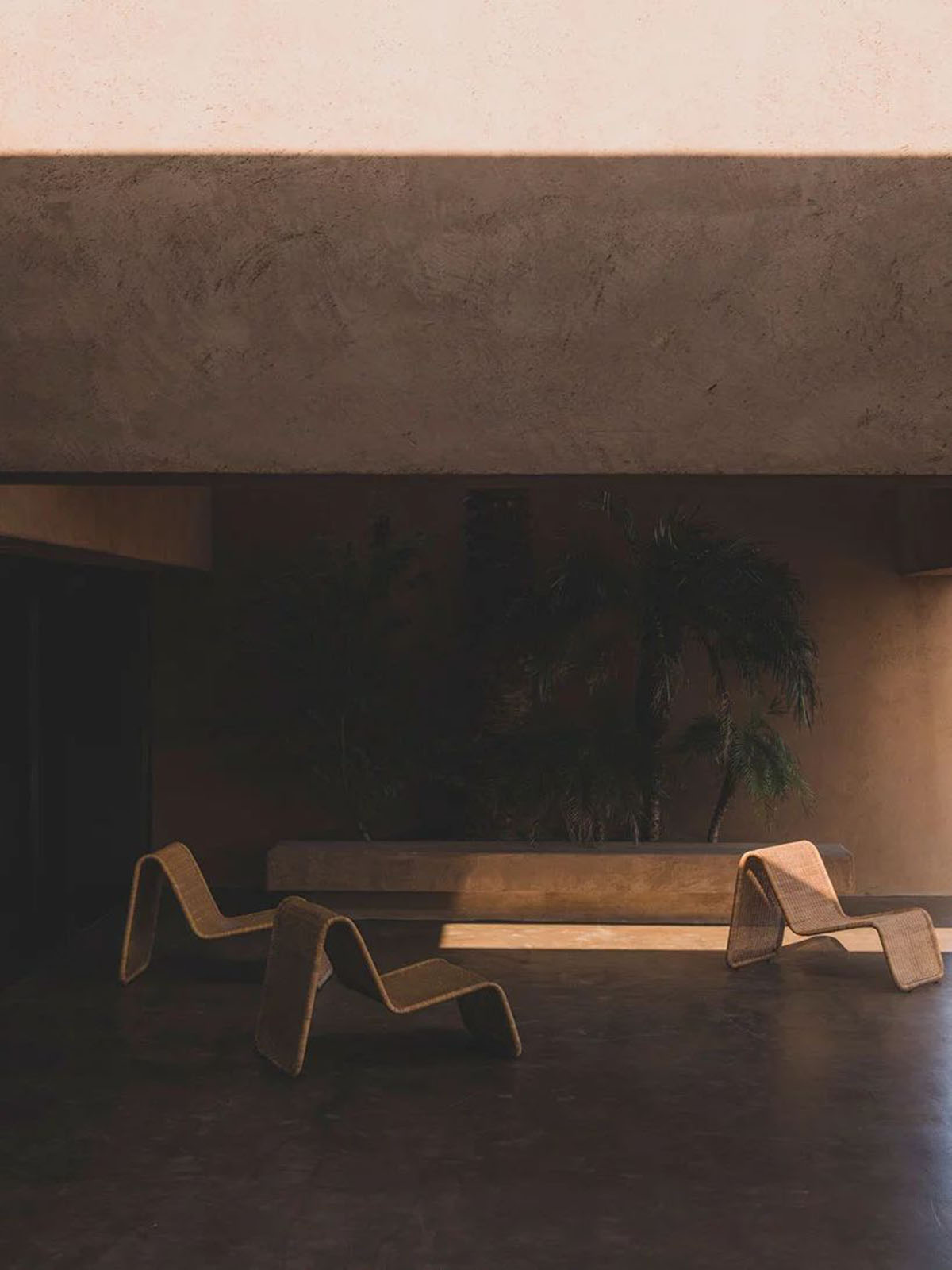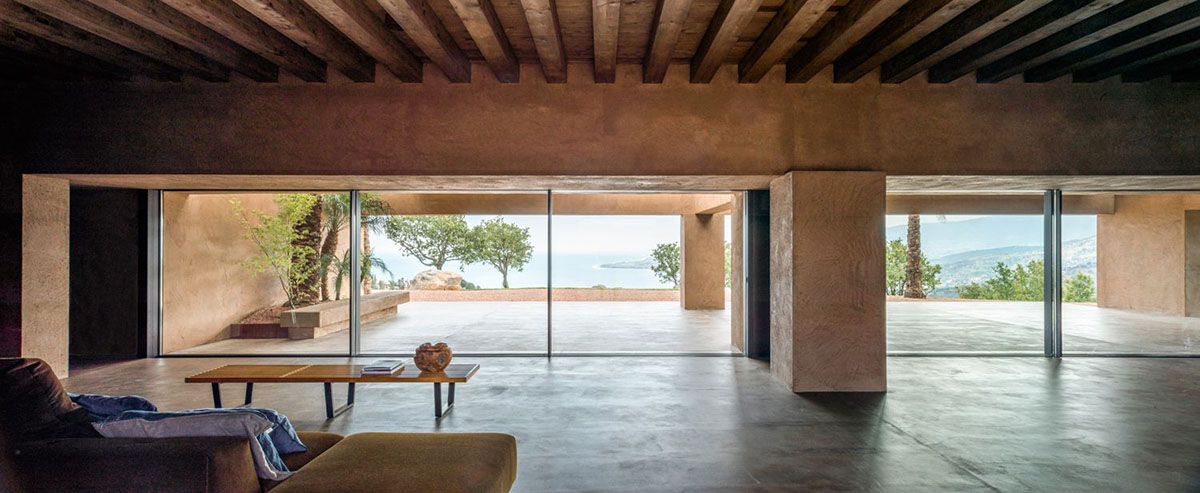Submitted by WA Contents
MORQ built Villa RA as the continuation of Calabria's rural landscape in Italy
Italy Architecture News - Sep 13, 2019 - 04:26 69177 views

Rome and Perth-based architecture practice MORQ has completed a new villa that acts like a continuation of a rural landscape in Calabria, a region in Southern Italy.
Named Villa RA, the spatial layout of the building is comprised of two elongated volumes with an entrance courtyard divided by the wall that welcomes its visitors with this inviting and homogeneous structure.

The Villa RA, covering a total of 400-square-metre area, seems it is a perfect fit to its own context since the architects aimed to achieve "authenticity" on this project.

"Villa RA stems from the desire of our clients to return to their roots in Calabria with the project of a summer retreat. They imagined this retreat as a place of respite and reconnection; a place from which to enjoy the virtues of their land in a way that is harmonious with not only the landscape, but also the tradition of living in such a place," said MORQ.
"To dwell in Calabria is to firmly locate oneself in the Mediterranean landscape. Calabria is the southernmost part of mainland Italy protruding between the Tyrrhenian and Ionian seas."

"It is defined through a long and narrow peninsula with the Aspromonte massif in its southernmost tip bordered by the sea on three sides. This unique mountainous structure is full of ridges with terraces sloping down towards the sea," they added.

Image © Pep Sau
The site of the house is located atop one of these ridges, degrades towards the Gulf of Squillace, around 300m above sea level. Situated as such, one’s experience is either loftily transported through views down toward the sea in the south and mountains in the west, or it is anchored into the land by the ancient granite boulders protruding from the earth.

Image © Pep Sau
Whilst the house is primarily designed for two people, the clients also wanted to be able to host and enjoy the pleasures of cooking for friends, family and larger gatherings.
As such, the program called for large living areas indoor and outdoor, a generous kitchen with an outdoor service area, an ensuite bedroom, and a quarter for the staff. "The desire to connect these spaces to the sea-view and the surrounding landscape was not only set out in the brief, but an innate and ever present aspect of the project," stressed the architects.

Image © Pep Sau
Villa RA is conceived as a "house that looks", the building is a compact structure punctuated by openings that frame the landscape. This was the architects' design intention; the idea that generated the project and held it accountable to the site.
The house is described as a typical of a Mediterranean dwelling, where the understanding of a relationship with the place has a central role in the conception and expression of its outcome. As a result, the new dwelling aims to be part of the landscape as a whole, as opposed to being an unrelated autonomous element.

But rather than looking to formally mimic the landscape in order to feel at ease with the site, the project draws from the tradition of the Italian villa and the material tones of the land it sits on. Like traditional Italian villas, the design is based on an axial organization as its primary ordering system.

This helps define the project not only from an architectural sense but also in its programmatic arrangement. The North-South axis organises a series of three spaces, offering differing levels of exposure to the site with a gradual progression towards the sea view.

Approaching the house from the northwestern side, its appearance feels rather enclosed; the result of a freestanding, 600mm thick wall protecting the entry patio from the north wind. This perception of an entirely enclosed structure helps to create a sense of discovery, and safety.

The sequence begins within this walled threshold; an enclosed entrance patio that acts as a buffer between the landscape and the built fabric. Following this is the main living area, the primary introduction with the interior world that facilitates both community and intimacy.
The living room opens onto the portico, the last defined space along the axis. The portico inherently blurs the delineation between indoor and outdoor; it is a typical feature of the Italian villa, acting as threshold space between the living area and the landscape.

Image © Pep Sau
The portico has two large openings and two slots to the roof allowing the sun to trace shadows throughout the day. Protected yet exposed, it is a place for relaxation, otium and the enjoyment of all the site’s sensory virtues; from the mingled smells of the wild grass and rosemary to infinite depth of the sea views. The second axis, this time running East-West, organises a delineation of semi-public to public to private spaces: namely the kitchen, the living room and the sleeping quarters.

Image © Pep Sau
At the intersection of these two axis lies the central living room at the heart of the house. The general climatic conditions of the site present strong winds from north-northwest side and direct sun from the south. Both the axial arrangement and physical depth of the construction offer the spaces a deep protective threshold.

Image © Pep Sau
These attributes work together to create a very deep and passive filter for climate control. Strong winds are thwarted off by the solid walls turning their back to the northwest. However, when required, the large openings facilitate cross-ventilation along the axis of the house, as well as framing the surrounding landscape.

Image © Pep Sau
The thermal mass of the thick walls mitigates the passing of hot days and cool nights, whilst deep openings prevent an overexposure to the direct sun. The material articulation of the interior and exterior space is resolved within a solid volume; a homogenous architecture of "Cocciopesto", a type of plaster chromatically akin to the soil achieved through rigorous sampling and trials.
Grounded to the site not only by the tone of the Cocciopesto, the project sits amongst a bed of crushed local stone that bleeds the thresholds further into the landscape.

The immediate surroundings of the Villa unfold around existing granite boulders and Oak trees with the addition of indigenous scrubs and wild grass. A more exotic flora with specimens such as the prickly pear cactus’, introduced in the region centuries ago, punctuates the garden areas closest to the villa while high Date Palm trees serve as markers, allowing for the dwelling to be seen from a far.

The limited palette of materials reveals the simple geometry of the building and creates a visual and tactile continuity between landscape and architecture. Monochrome yet vibrant, Villa Ra changes hues during the day, responding to sun and land, revealing movement through shadows and ever changing material nuances.

Image © Pep Sau


Image © Pep Sau









Project facts
Project name: Villa RA
Architect: MORQ
Location: Calabria, Italy
Size: 400m2
All images © Givlio Aristide unless otherwise stated.
All drawings © MORQ
> via MORQ
